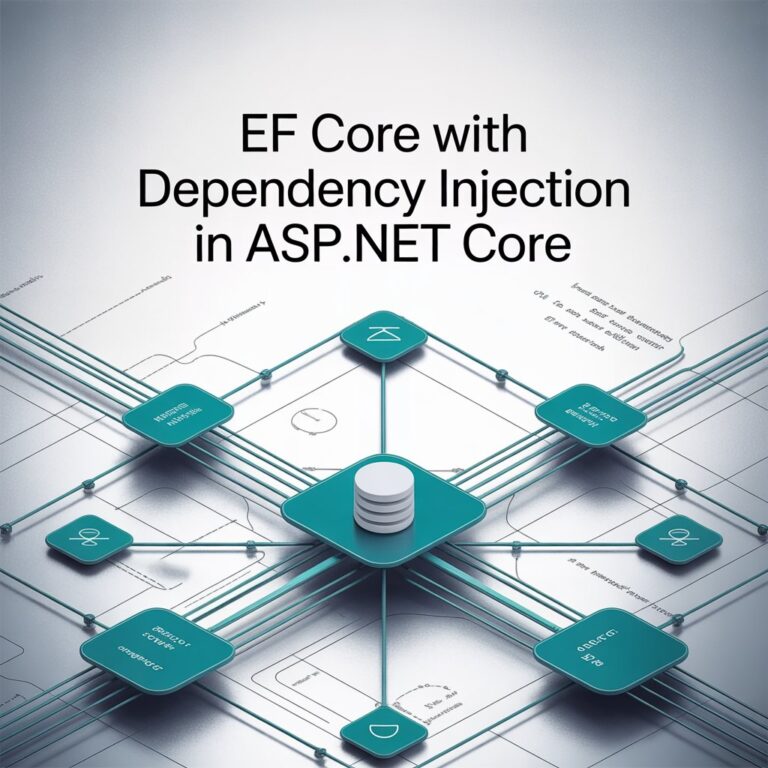Introduction
Hey there, fellow developers! If you’re like me, juggling multiple projects and environments, you know how frustrating it can be to ensure your ASP.NET Core app runs smoothly across different machines. One day, everything works perfectly on your local setup, and the next, you’re stuck debugging weird dependency issues. That’s where Docker comes in to save the day!
In this guide, I’ll walk you through how I containerized an ASP.NET Core application for one of my recent project. We’ll cover setting up a Dockerfile, configuring Docker Compose, and making sure our containerized app works seamlessly with PostgreSQL.
By the end, you’ll have a running ASP.NET Core app inside a Docker container, fully isolated, reproducible, and easy to deploy.
Why Use Docker for ASP.NET Core?
Before we start coding, let’s quickly go over why Docker is a game-changer:
- Consistency – No more “works on my machine” issues. The app runs the same way across all environments.
- Isolation – Keeps dependencies and configurations separated from your host machine.
- Scalability – Works seamlessly with Kubernetes for scaling applications.
- Easier Deployment – Deploy to any cloud provider or server without headaches.
I’ve personally use Docker in my Personal Project, where I needed an environment that could run ASP.NET Core, PostgreSQL, and some background services without dealing with mismatched dependencies across different setups.
Here are the steps you need to run an ASP.NET Core application in a Docker container. Steps 5, 6 and 8 provide a quick preview of how to add a database to your application and push your Docker image to Docker Hub for deployment to production which is a more real-world scenario.
Step 1: Setting Up the ASP.NET Core Application
Let’s start by creating a simple ASP.NET Core Web API
mkdir DockerAspNetCoreApp
cd DockerAspNetCoreApp
dotnet new webapi -n MyDockerApp
cd MyDockerAppThis will create a new ASP.NET Core Web API project inside MyDockerApp.
Now, run it locally to make sure everything works:
dotnet runYou should see output similar to this:
Now listening on: https://localhost:5001
Now listening on: http://localhost:5000Open https://localhost:5001/swagger in your browser, and you should see the Swagger UI with the default weather forecast endpoint.
Step 2: Writing the Dockerfile
Now that we have our ASP.NET Core API, let’s containerize it using a Dockerfile. Inside your project directory, create a file named Dockerfile (without an extension) and add the following:
# Use the official .NET SDK as the base image for building
FROM mcr.microsoft.com/dotnet/sdk:8.0 AS build
WORKDIR /app
COPY . .
RUN dotnet restore
RUN dotnet publish -c Release -o out
# Use the ASP.NET runtime image to run the application
FROM mcr.microsoft.com/dotnet/aspnet:8.0 AS runtime
WORKDIR /app
COPY --from=build /app/out .
ENTRYPOINT ["dotnet", "MyDockerApp.dll"]This does the following:
- Uses the .NET SDK image to build the application
- Restores dependencies and publishes the app
- Copies the compiled output to a lightweight runtime container
- Runs the app using dotnet MyDockerApp.dll
Step 3: Building and Running the Docker Container
To keep our image clean, let’s create a .dockerignore file in the root of our project:
bin/
obj/
.vscode/
.git/This prevents unnecessary files from being copied into the container.
Step 4: Building and Running the Docker Container
Now’ let’s build and run our containerized app
Build the Docker Image
docker build -t mydockerapp .Run the Container
docker run -d -p 8080:8080 mydockerappNow, open http://localhost:8080 in your browser, and you should see your API running inside Docker!
Step 5: Adding PostgreSQL with Docker Compose
Now, let’s take it a step further and add a PostgreSQL database using Docker Compose:
Create a docker-compose.yml file
version: '3.8'
services:
api:
build: .
ports:
- "8080:8080"
depends_on:
- db
db:
image: postgres:15
environment:
POSTGRES_USER: myuser
POSTGRES_PASSWORD: mypassword
POSTGRES_DB: mydatabase
volumes:
- postgres_data:/var/lib/postgresql/data
volumes:
postgres_data:This creates:
- A PostgreSQL database container with credentials
- A Docker Volume to persist database data
- A dependency between API and database so that the API starts only after the database is ready.
Run Everything with Docker Compose
docker-compose up -dYour ASP.NET Core app will now run inside a containerized environment along with a PostgreSQL database
Step 6: Connecting ASP.NET Core to PostgreSQL
Modify your appsettings.json file to use PostgreSQL:
"ConnectionStrings": {
"DefaultConnection": "Host=db;Port=5432;Username=[USERNAME HERE];Password=[PASSWORD HERE];Database=[DATABASE NAME HERE]"
}Step 7: Debugging Dockerized ASP.NET Core Apps
if something isn’t working, you can check the logs:
docker logs <container_id>To get inside a running container:
docker exec -it <container_id> /bin/bashStep 8: Deploying to Docker Hub
Once your app works locally, you can push it to Docker Hub:
docker tag mydockerapp mydockerhubusername/mydockerapp
docker push mydockerhubusername/mydockerappOn your production server, pull and run:
docker pull mydockerhubusername/mydockerapp
docker run -d -p 8080:8080 mydockerhubusername/mydockerappUsing Docker with ASP.NET Core simplifies deployment, ensures consistency and makes scaling easier. If you’re not using Docker yet, I highly recommend giving it a try.






